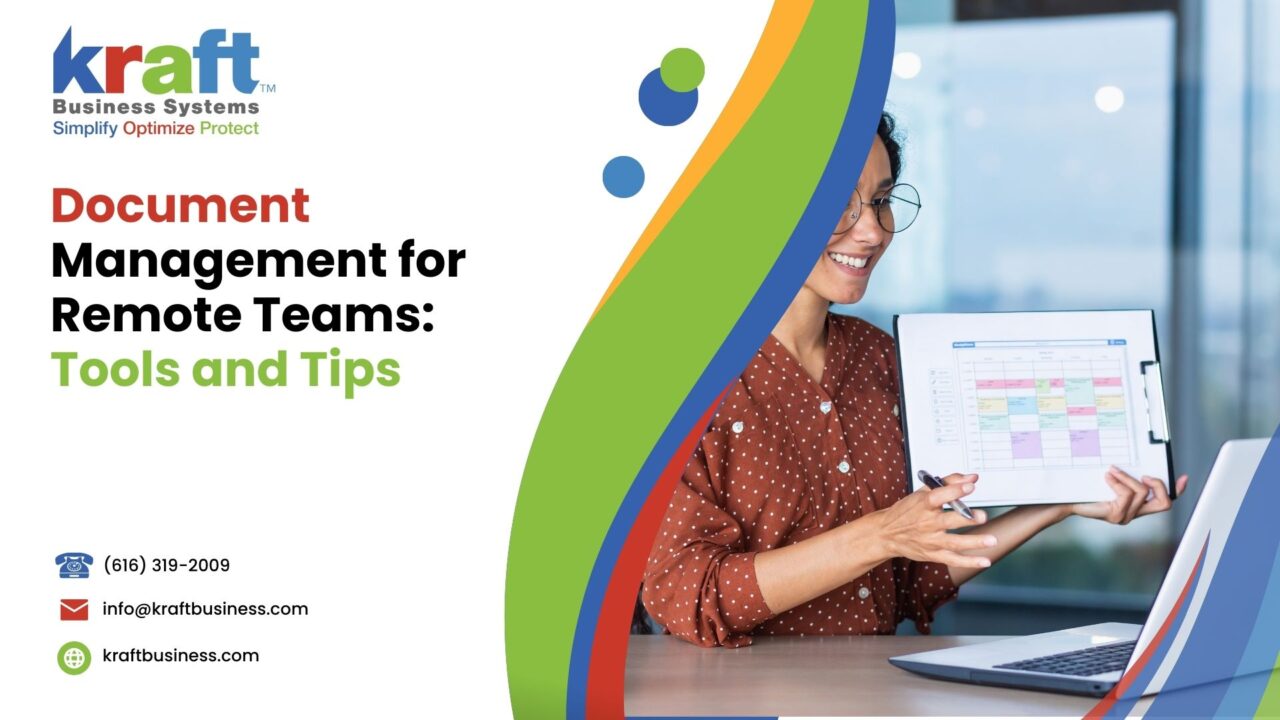Remote work has become the norm, efficient document management is paramount. With team members spread across various locations, managing documents effectively ensures seamless collaboration and enhances productivity. Document management systems play a pivotal role in centralizing information, making it accessible to all team members in real-time.
However, managing documents for a remote team comes with its own set of challenges. For instance, maintaining data security and ensuring that everyone has the right permissions can be daunting. Moreover, without face-to-face interactions, communication barriers can lead to mismanagement of documents. This can hinder the workflow and affect overall productivity.
In this article, we will delve into the importance of document management for remote teams, explore the challenges they face, and provide practical tips and tools to streamline the process. We will also discuss best practices for effective document management, present case studies, and look at future trends in this domain. By the end, you’ll have a comprehensive understanding of how to manage documents efficiently in a remote work environment.
Understanding Document Management
Definition and Importance
Document management refers to the process of storing, organizing, and controlling documents within an organization. For remote teams, it’s crucial because it ensures that all team members have access to the latest information and can collaborate efficiently. In other words, a well-implemented document management system can make the difference between a chaotic workflow and a seamless one.

Remote teams rely heavily on digital tools to collaborate and communicate. Therefore, having a robust document management system is essential. It centralizes all documents, making them easily accessible and reducing the time spent searching for information. Above all, it enhances the team’s ability to work together effectively, despite being geographically dispersed.
Benefits of Effective Document Management
An effective document management system offers numerous benefits. Firstly, it significantly increases productivity. Team members can quickly locate and access the documents they need, streamlining their workflow and saving time. For instance, instead of sifting through countless emails, they can find everything in one place.
Secondly, it enhances collaboration. Real-time editing and sharing capabilities mean that team members can work on documents simultaneously, making the process more efficient. This is particularly important for remote teams, where timely collaboration can be challenging.
Moreover, improved data security is a major advantage. With proper management software, documents are encrypted, and access permissions are controlled, ensuring that sensitive information remains protected. Regular audits further ensure compliance with data protection regulations. Therefore, implementing a good document management system is not just a convenience but a necessity for remote teams.
By understanding these aspects, remote teams can overcome common challenges and leverage the full potential of document management to improve their efficiency and security.
Challenges of Document Management for Remote Teams
Communication Barriers
Managing documents in a remote work environment comes with unique challenges. Time zone differences are a major hurdle. When team members are spread across different time zones, coordinating document access and updates can be tricky. For instance, one member may be working while another is asleep, causing delays.
Moreover, the lack of face-to-face interaction can lead to miscommunication. Without in-person meetings, clarifying document details and resolving issues takes longer. Communication tools like email and chat help, but they can never fully replicate the efficiency of direct, personal interaction.
Data Security Concerns
Data security is another significant concern for remote teams. The risk of data breaches is higher when documents are shared across various networks and devices. Remote workers often use personal devices, which may not have robust security measures, increasing vulnerability.
Ensuring compliance with industry regulations adds another layer of complexity. Teams must follow data protection laws like GDPR or HIPAA, which require stringent security practices. Therefore, implementing encryption tools and access control mechanisms is essential to protect sensitive information and maintain compliance.
Essential Tools for Document Management
Document Storage Solutions
Effective document storage solutions are vital for remote teams. Cloud storage options like Google Drive and Dropbox offer convenient access and sharing capabilities. They allow team members to store, retrieve, and share documents securely from anywhere.

There’s a debate between using on-premises vs. cloud solutions. On-premises storage offers more control over data, but it lacks the flexibility and accessibility of cloud storage. Cloud solutions, however, provide scalability and ease of access, making them ideal for remote teams.
Collaboration Tools
Collaboration tools are indispensable for remote teams. Platforms like Microsoft Teams and Slack enable real-time editing and sharing of documents. These tools facilitate real-time collaboration, allowing multiple team members to work on the same document simultaneously, which boosts productivity.
Version control and tracking changes are critical features of these tools. They ensure that all edits are tracked, and previous versions are easily accessible. This minimizes confusion and ensures that everyone is working on the most up-to-date version of a document, eliminating the need for constant manual updates.
Security Tools
To protect documents, security tools are a must. Encryption tools safeguard documents by encoding information, making it inaccessible to unauthorized users. This is crucial for protecting sensitive data in transit and at rest.
Access control and user permissions help to control who can view, edit, or share documents. By assigning specific permissions to team members, organizations can ensure that only authorized individuals have access to critical information. Implementing these measures creates a robust security framework, essential for maintaining data integrity in a remote work environment.
Best Practices for Document Management
Establishing Clear Policies
Establishing clear policies is the cornerstone of effective document management. Setting standardized document naming conventions helps in organizing and retrieving files easily. Consistent naming avoids confusion and saves time.
Implementing version control practices ensures that everyone works on the latest document version. It prevents overwriting and loss of important changes. Tools like Microsoft 365 and SharePoint offer built-in version control, making it easier to manage document versions seamlessly.
Training and Support
Providing regular training sessions is essential to familiarize remote employees with document management tools and best practices. Continuous training keeps team members updated on new features and security protocols.
Providing resources and support ensures that team members can resolve issues quickly. Having a dedicated support team or helpdesk can address queries and technical difficulties, enabling employees to work efficiently without disruptions.
Regular Audits and Reviews
Conducting periodic audits of document management practices helps identify areas for improvement. Regular reviews ensure compliance with security protocols and data protection regulations.

Continuous improvement and updates are necessary to adapt to changing technologies and work environments. Updating document management policies and tools in response to feedback and audits enhances overall efficiency and security.
Future Trends in Document Management for Remote Teams
AI and Automation
The role of AI in document management is expanding. AI can automate routine tasks like sorting and tagging documents, saving time and reducing errors. Automation streamlines workflows, allowing team members to focus on more strategic tasks.
Enhanced Security Measures
Emerging security technologies like advanced encryption and biometric authentication are shaping the future of document management. These technologies offer enhanced protection against data breaches. As security measures evolve, remote teams can expect more robust document management systems that ensure data safety.
What People May Also Ask
How can remote teams ensure data security in document management?
Implementing encryption and access control measures ensures data security. Regular audits and compliance with regulations also help.
What are the best document management tools for remote teams?
Tools like Google Drive, Microsoft Teams, and SharePoint are popular for their collaboration and security features.
How do you handle version control in a remote setup?
Using tools with built-in version control, such as Microsoft 365, helps track document changes and access previous versions easily.
What are the challenges of document management for remote teams?
Common challenges include communication barriers, data security concerns, and maintaining document accessibility.
How often should document management policies be reviewed?
Policies should be reviewed periodically, at least once a year, or whenever there are significant changes in the team or technology.
Conclusion
In conclusion, effective document management is crucial for remote teams. It enhances productivity, ensures data security, and facilitates seamless collaboration. By understanding the challenges and implementing the right tools and best practices, teams can work efficiently from anywhere.
Regular reviews and embracing future trends will further strengthen document management processes. Therefore, investing time and resources in a robust document management system is essential for the success of remote teams.






